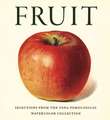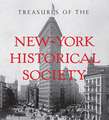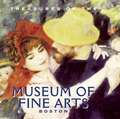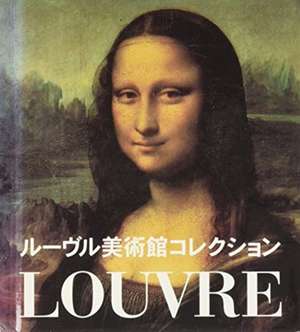Treasures of the Louvre: Tiny Folio
Autor Michel Laclotteen Limba Engleză Hardback – 31 dec 2001
Two hundred years ago, the doors of the Louvre opened to the public for the very first time. The palace of the French kings had been transformed into a museum that today stretches over an enormous architectural ensemble right in the heart of Paris.
The royal collections first assembled by Francis I in the sixteenth century were later transferred to the Louvre palace, and this prestigious core was further enriched with artistic treasures during the Revolutionary period. The collections have been growing ever since, and are today divided into seven departments. Oriental Antiquities, Egyptian Antiquities, and Greek, Etruscan, and Roman Antiquities illustrate the art and culture of the ancient Near East and Middle East and the Mediterranean countries. The other four so–called "modern" departments—painting, sculpture, decorative arts, and drawing—span Western art from the height of the Middle Ages to the mid–nineteenth century.
The royal collections first assembled by Francis I in the sixteenth century were later transferred to the Louvre palace, and this prestigious core was further enriched with artistic treasures during the Revolutionary period. The collections have been growing ever since, and are today divided into seven departments. Oriental Antiquities, Egyptian Antiquities, and Greek, Etruscan, and Roman Antiquities illustrate the art and culture of the ancient Near East and Middle East and the Mediterranean countries. The other four so–called "modern" departments—painting, sculpture, decorative arts, and drawing—span Western art from the height of the Middle Ages to the mid–nineteenth century.
Din seria Tiny Folio
-
 Preț: 74.82 lei
Preț: 74.82 lei - 11%
 Preț: 379.29 lei
Preț: 379.29 lei -
 Preț: 68.68 lei
Preț: 68.68 lei -
 Preț: 68.93 lei
Preț: 68.93 lei -
 Preț: 75.01 lei
Preț: 75.01 lei -
 Preț: 75.88 lei
Preț: 75.88 lei -
 Preț: 75.64 lei
Preț: 75.64 lei -
 Preț: 68.93 lei
Preț: 68.93 lei -
 Preț: 68.99 lei
Preț: 68.99 lei -
 Preț: 68.73 lei
Preț: 68.73 lei -
 Preț: 77.11 lei
Preț: 77.11 lei -
 Preț: 68.78 lei
Preț: 68.78 lei -
 Preț: 61.76 lei
Preț: 61.76 lei -
 Preț: 62.83 lei
Preț: 62.83 lei -
 Preț: 66.78 lei
Preț: 66.78 lei -
 Preț: 69.05 lei
Preț: 69.05 lei - 19%
 Preț: 28.20 lei
Preț: 28.20 lei -
 Preț: 68.46 lei
Preț: 68.46 lei - 20%
 Preț: 55.20 lei
Preț: 55.20 lei - 24%
 Preț: 50.75 lei
Preț: 50.75 lei - 21%
 Preț: 53.59 lei
Preț: 53.59 lei - 20%
 Preț: 55.20 lei
Preț: 55.20 lei - 6%
 Preț: 65.00 lei
Preț: 65.00 lei -
 Preț: 68.84 lei
Preț: 68.84 lei
Preț: 59.55 lei
Nou
Puncte Express: 89
Preț estimativ în valută:
11.40€ • 11.98$ • 9.42£
11.40€ • 11.98$ • 9.42£
Carte indisponibilă temporar
Doresc să fiu notificat când acest titlu va fi disponibil:
Se trimite...
Preluare comenzi: 021 569.72.76
Specificații
ISBN-13: 9784925080026
ISBN-10: 4925080024
Pagini: 384
Dimensiuni: 102 x 111 mm
Greutate: 0.34 kg
Ediția:Japanese Edition
Editura: Abbeville Publishing Group
Colecția Abbeville Press
Seria Tiny Folio
ISBN-10: 4925080024
Pagini: 384
Dimensiuni: 102 x 111 mm
Greutate: 0.34 kg
Ediția:Japanese Edition
Editura: Abbeville Publishing Group
Colecția Abbeville Press
Seria Tiny Folio
Cuprins
Preface Michel Laclotte
Oriental Antiquities
Egyptian Antiquities
Greek, Etruscan, and Roman Antiquities
Decorative Arts
Sculpture
European Paintings
Drawings
Index of Illustrations
Oriental Antiquities
Egyptian Antiquities
Greek, Etruscan, and Roman Antiquities
Decorative Arts
Sculpture
European Paintings
Drawings
Index of Illustrations
Notă biografică
Michel Laclotte is an art historian and the former director of the Louvre.
Extras
PREFACE
The doors of the Louvre opened to the public for the very first time more than two hundred years ago. The Museum Central des Arts, as it was then called, was established by the young republic in 1793, though the idea of turning the palace of the French kings into a museum had already been considered at the time of the ancien régime. The majority of paintings, drawings, statues, and decorative art objects in the "museum of the nation" came from the royal—by then national—collections.
Since then the museum has progressively spread out into the different parts of the palace itself and into the adjoining buildings constructed subsequently, most notably the Ministry of Finance. Today the Musée du Louvre stretches over an enormous architectural ensemble running parallel to the Seine, right in the heart of the city of Paris and its gardens.
Operation "Grand Louvre," currently underway, is in the process of literally transforming the museum from top to bottom. As part of this enormous enterprise, the palace itself is being restored and thoroughly rearranged, the magnificent moats surrounding the medieval ramparts of the fortress have been uncovered, and a vast underground area containing all the indispensable visitor services and technical equipment has been created. This gradual but total metamorphosis of the Louvre has also involved the restoration of the sculpted facades of the courtyards; the installation of a new entrance in the center of the Cour Napoléon, featuring architect I. M. Peis famous glass pyramid; a new display space for French painting around the Cour Carrée; and the incorporation of the Ministry of Finance into the museum. The display area has been doubled so that in the future the museums collections can be totally reorganized into a more logical and ample presentation.
This radical program of modernization goes hand in hand with a legitimate respect for the past, a policy apparent not only in the obvious care given to the renovation of the old interior decoration, but also in the design of the new rooms and of the original structures. This regard for the past extends to the traditions of the museum itself as they have evolved over the past two centuries from the museums formation through the various phases in its development.
The history of the collections begins with the transfer to the Louvre palace of the artistic treasures in the royal collections first assembled by Francis I (1494–1547). During the Revolutionary period this prestigious core was enriched with treasures taken from the nationalized collections of emigrants and churches and by purchase, to which were added, during the Republic and the Empire, the spoils of war in Europe. In 1815, after Waterloo, the victorious allies forced France to restitute all but a few of the paintings and ancient sculptures seized in Italy, the Netherlands, Germany, and Belgium that had been on display at the Louvre in the ephemeral and outstanding "Musée Napoléon."
The collections have been growing ever since. Throughout the nineteenth century, existing departments were methodically enlarged while new sections were opened: the Egyptian Museum was founded by Champollion in 1826, and the Assyrian Museum was formed in 1847. The "primitives," the long–forgotten arts of the Middle Ages, the paintings and decorative arts of the eighteenth century that had been held in contempt during the neoclassic period, and the then–modern art of the nineteenth century are but a few examples of the range of artistic traditions that gradually found their place in the museum.
The Louvre has always endeavored to perfect its representation of the most significant centers and moments in the history of art in Europe, a policy that has been made possible by continual acquisitions and the enlightened and uninterrupted generosity of more than three thousand philanthropists. In this way the encyclopedic ideals that presided over the foundation of the museum itself in the eighteenth century have been extended and kept alive in the Louvre's comprehensive approach.
The collections today are divided into seven departments. Through a broad range of works and without respect to technical distinctions, the first three departments—Oriental Antiquities; Egyptian Antiquities; and Greek, Etruscan, and Roman Antiquities—illustrate the art and culture of the ancient Near East and Middle East (including Islamic art), and the Mediterranean countries. The other four so–called "modern" departments are based on artistic categories—painting, sculpture, decorative arts, and drawing—and span Western art from the height of the Middle Ages to the mid–nineteenth century.
This book provides a grand tour in miniature of the Louvres seven departments, highlighting its most renowned masterpieces. Visitors to the museum can thus retain a beautiful visual reminder of what they have seen. Those who have never been to the Louvre will have a tantalizing glimpse of this superb collection, and will perhaps be encouraged to experience the museum in person to become better acquainted with these great works of art.
Michel Laclotte
Director, Musée du Louvre
The doors of the Louvre opened to the public for the very first time more than two hundred years ago. The Museum Central des Arts, as it was then called, was established by the young republic in 1793, though the idea of turning the palace of the French kings into a museum had already been considered at the time of the ancien régime. The majority of paintings, drawings, statues, and decorative art objects in the "museum of the nation" came from the royal—by then national—collections.
Since then the museum has progressively spread out into the different parts of the palace itself and into the adjoining buildings constructed subsequently, most notably the Ministry of Finance. Today the Musée du Louvre stretches over an enormous architectural ensemble running parallel to the Seine, right in the heart of the city of Paris and its gardens.
Operation "Grand Louvre," currently underway, is in the process of literally transforming the museum from top to bottom. As part of this enormous enterprise, the palace itself is being restored and thoroughly rearranged, the magnificent moats surrounding the medieval ramparts of the fortress have been uncovered, and a vast underground area containing all the indispensable visitor services and technical equipment has been created. This gradual but total metamorphosis of the Louvre has also involved the restoration of the sculpted facades of the courtyards; the installation of a new entrance in the center of the Cour Napoléon, featuring architect I. M. Peis famous glass pyramid; a new display space for French painting around the Cour Carrée; and the incorporation of the Ministry of Finance into the museum. The display area has been doubled so that in the future the museums collections can be totally reorganized into a more logical and ample presentation.
This radical program of modernization goes hand in hand with a legitimate respect for the past, a policy apparent not only in the obvious care given to the renovation of the old interior decoration, but also in the design of the new rooms and of the original structures. This regard for the past extends to the traditions of the museum itself as they have evolved over the past two centuries from the museums formation through the various phases in its development.
The history of the collections begins with the transfer to the Louvre palace of the artistic treasures in the royal collections first assembled by Francis I (1494–1547). During the Revolutionary period this prestigious core was enriched with treasures taken from the nationalized collections of emigrants and churches and by purchase, to which were added, during the Republic and the Empire, the spoils of war in Europe. In 1815, after Waterloo, the victorious allies forced France to restitute all but a few of the paintings and ancient sculptures seized in Italy, the Netherlands, Germany, and Belgium that had been on display at the Louvre in the ephemeral and outstanding "Musée Napoléon."
The collections have been growing ever since. Throughout the nineteenth century, existing departments were methodically enlarged while new sections were opened: the Egyptian Museum was founded by Champollion in 1826, and the Assyrian Museum was formed in 1847. The "primitives," the long–forgotten arts of the Middle Ages, the paintings and decorative arts of the eighteenth century that had been held in contempt during the neoclassic period, and the then–modern art of the nineteenth century are but a few examples of the range of artistic traditions that gradually found their place in the museum.
The Louvre has always endeavored to perfect its representation of the most significant centers and moments in the history of art in Europe, a policy that has been made possible by continual acquisitions and the enlightened and uninterrupted generosity of more than three thousand philanthropists. In this way the encyclopedic ideals that presided over the foundation of the museum itself in the eighteenth century have been extended and kept alive in the Louvre's comprehensive approach.
The collections today are divided into seven departments. Through a broad range of works and without respect to technical distinctions, the first three departments—Oriental Antiquities; Egyptian Antiquities; and Greek, Etruscan, and Roman Antiquities—illustrate the art and culture of the ancient Near East and Middle East (including Islamic art), and the Mediterranean countries. The other four so–called "modern" departments are based on artistic categories—painting, sculpture, decorative arts, and drawing—and span Western art from the height of the Middle Ages to the mid–nineteenth century.
This book provides a grand tour in miniature of the Louvres seven departments, highlighting its most renowned masterpieces. Visitors to the museum can thus retain a beautiful visual reminder of what they have seen. Those who have never been to the Louvre will have a tantalizing glimpse of this superb collection, and will perhaps be encouraged to experience the museum in person to become better acquainted with these great works of art.
Michel Laclotte
Director, Musée du Louvre
